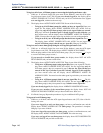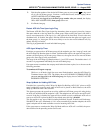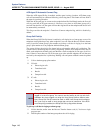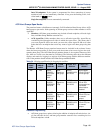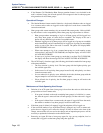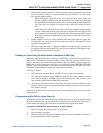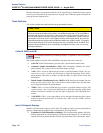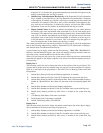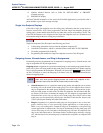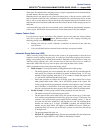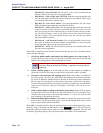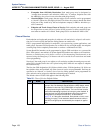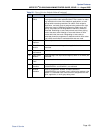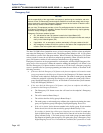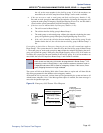
System Features
INTER-TEL
®
CS-5200/5400 ADMINISTRATOR GUIDE, ISSUE 1.1 – August 2005
Page 154 Single Line Endpoint Displays
4. Number Absence Reason, such as Caller ID “OUT-OF-AREA” or “PRIVATE”
(blocked) message.
5. RINGING IN display.
ANI and Caller ID information is also sent to the Voice Mail application to provide the caller’s
phone number as part of the message envelope
Single Line Endpoint Displays
Caller ID to single line endpoints uses the calling party information that the system receives
from the central office (CO). Once programmed, on-hook single line endpoints display the
calling party’s phone number after the first ring when they receive an incoming CO call. The
Caller ID information is also displayed if the single line endpoint receives a transferred call
from another endpoint that has calling party information.
Single line endpoint Caller ID requires the following provisions:
• Calling Party information services from the telephone company CO
• Advanced CO Interfaces, which is a standard feature on the Inter-Tel CS-5200/5400
• CO trunks programmed for Caller ID
• Programming that enables the single line endpoint to receive Caller ID signals
Outgoing-Access, Allowed-Answer, and Ring-In Assignments
Each trunk group has programmed lists of endpoints for outgoing-access, allowed-answer, and
ring-in assignments for day and night modes.
Outgoing-access assignment for a particular trunk group or node trunk group permits the end-
point user to place calls using trunks in that trunk group. Each endpoint has a default outgoing
access code programmed in the database. When the user presses the button, presses
an idle Call button, or enters the Outgoing Call feature code (8), the system automatically
selects an outgoing trunk.
• Allowed-answer access to a particular trunk group permits the endpoint user to answer
incoming calls on the trunks in that trunk group, even if the endpoint does not have
ring-in assignment for that trunk group. Endpoints cannot have allowed-answer assign-
ment for trunk groups on other nodes. On Inter-Tel endpoints, the individual trunk but-
ton flashes (if one exists) to indicate the ringing call. If a endpoint is programmed with
allowed-answer access only (no ring-in) for a trunk group, direct ring-in calls on that
trunk group can be answered by entering the Automatic Trunk Answer feature code
(350) or pressing the flashing individual trunk button.
• Ring-in assignment for a particular trunk group can be assigned to one or more end-
points, extension lists, or voice processing system applications; to a hunt group; to
DISA; or to a call routing table. A trunk can ring in to an endpoint or voice processing
system application on another node. The ring in destination(s) for the trunk group will
receive direct ring-in calls on trunks in that trunk group. On Inter-Tel endpoints with
ring in, the individual trunk or Call button flashes, and the display indicates a ringing
call. Allowed answer for the trunk group is automatically assigned to an endpoint with
ring in.
NOTE Caller ID is not transmitted to Single-Line adapters (SLAs).
NOTE
Because the network does not allow users to directly access trunks on other
nodes, each trunk group’s Outgoing Access can contain only endpoints on the
local node. Users must use ARS to access trunks on other nodes.
OUTGOING



